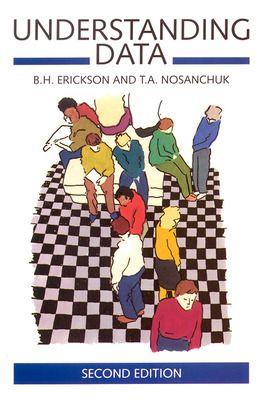Understanding Data
2nd Edition
033509662X
·
9780335096626
© 1992 | Published: September 16, 1992
For statistics to be used by sociologists, and especially by students of sociology, they must first be easy to understand and use. Accordingly this book is aimed at that legion of professional sociologists and students who have always feared numbers;…
Read More
Request Review Copy
Receive via shipping:
- Colour, print bound version of the complete text
Understanding data
organizing numbers
understanding numerical summaries
graphs - seeing and setting aside
transforming data
choosing a transformation for several related batches
the random sample
confirmatory statistics
when sigma is not known
comparing several batch levels
y and x and straight lines
unbending
linear regression
analyzing tables
elementary analysis
interaction effects in elementary analyses
two-way analysis of variance
getting more from residuals
organizing numbers
understanding numerical summaries
graphs - seeing and setting aside
transforming data
choosing a transformation for several related batches
the random sample
confirmatory statistics
when sigma is not known
comparing several batch levels
y and x and straight lines
unbending
linear regression
analyzing tables
elementary analysis
interaction effects in elementary analyses
two-way analysis of variance
getting more from residuals
partial correlations and causality
multiple regression
appendices
For statistics to be used by sociologists, and especially by students of sociology, they must first be easy to understand and use. Accordingly this book is aimed at that legion of professional sociologists and students who have always feared numbers; it employs much visual display, for example, as an easy way into the data. Also, the book is written in a relaxed and enthusiastic way that reassures apprehensive students without watering down what they must be taught.
Classical statistics were developed to meet the requirements of the natural sciences; as such they reflect the more deductive nature of hypothesis development in these sciences. However, they have offered the sociologists little in the way of techniques for exploring messy data in the context of incomplete theories.
This book attempts to remedy those weaknesses, and it emphasizes exploratory data techniques which sociologists will find useful in their day-to-day research. The primary characteristics of exploratory techniques discussed by the authors are simplicity, resistance and elucidation. Its coverage is from basic statistics up to multiple regression and two-way anova. The inter-relationship between exploratory and confirmatory techniques is stressed, and, through the alternating presentation of each, the students learn to master data analysis: to be and to feel in control.
Classical statistics were developed to meet the requirements of the natural sciences; as such they reflect the more deductive nature of hypothesis development in these sciences. However, they have offered the sociologists little in the way of techniques for exploring messy data in the context of incomplete theories.
This book attempts to remedy those weaknesses, and it emphasizes exploratory data techniques which sociologists will find useful in their day-to-day research. The primary characteristics of exploratory techniques discussed by the authors are simplicity, resistance and elucidation. Its coverage is from basic statistics up to multiple regression and two-way anova. The inter-relationship between exploratory and confirmatory techniques is stressed, and, through the alternating presentation of each, the students learn to master data analysis: to be and to feel in control.

